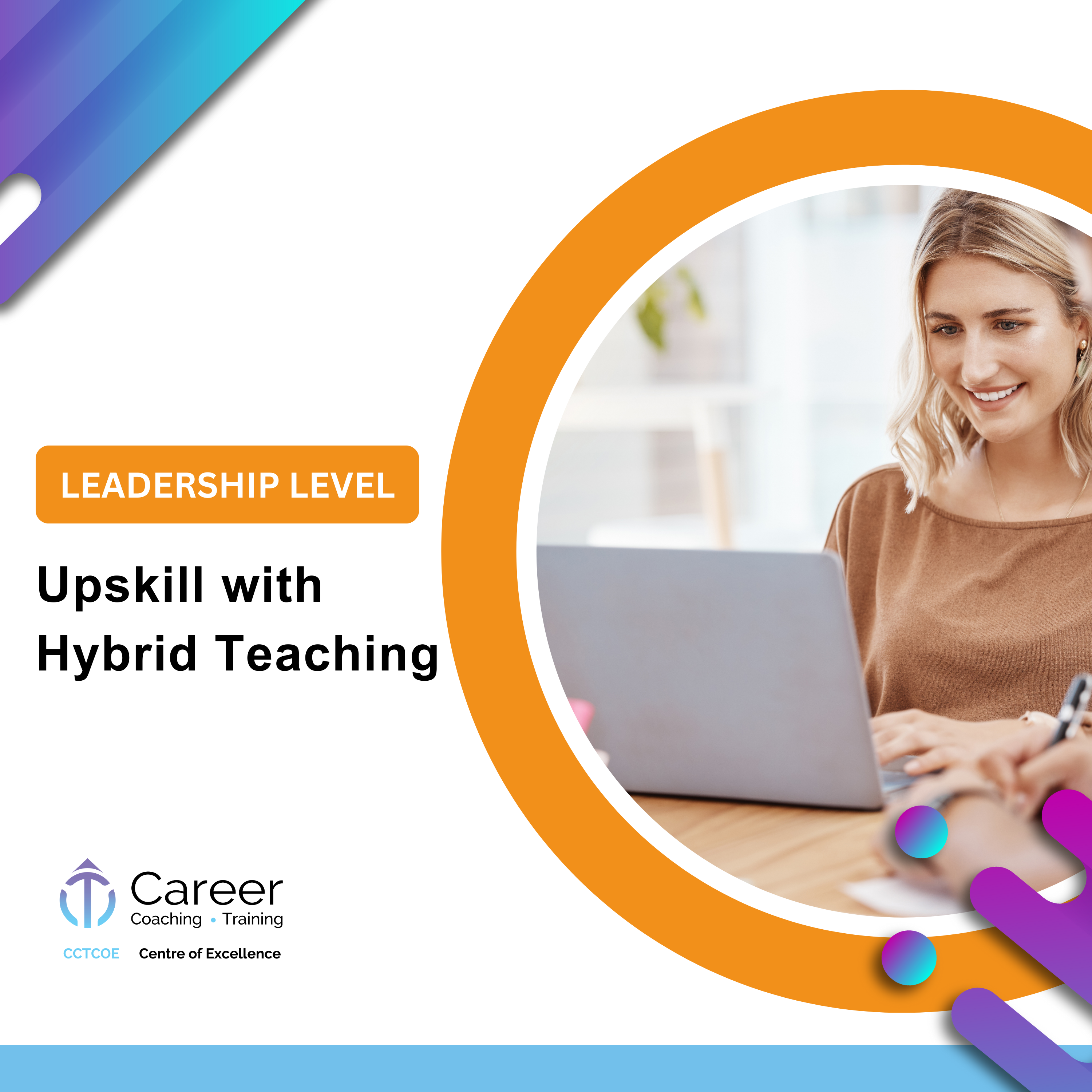
Upskill with Hybrid Teaching
BACKGROUND
In the current environment calling for educational flexibility and maximising resources, hybrid teaching is a comprehensive approach to combine the best parts of face-to-face and online teaching as a seamless learning experience. Hybrid teaching requires time to plan the program and each session, and to make modifications to traditional teaching practices to deliver high-quality, impactful educational experiences to make education more attainable for students on a global scale.
Hybrid teaching is the future of education. It may present initial challenges; however, the hybrid model allows to reimagine education and build a learning environment that incorporates all the elements of a quality learning experience.
COURSE CONCEPT
Hybrid learning combines face-to-face and online teaching to create the ideal learning experience. Students can attend class in person simultaneously as students join the class virtually from home or anywhere the student is located. Hybrid learning combines the best elements of face-to-face and online learning with digital engagement. Students connect with their educators and peers and receive the same information presented by the educator through synchronous classes that run in real-time, or if they prefer, asynchronous learning when they engage with the course content at different times based on their schedule and time frame.
For hybrid learning to succeed, it requires a great deal of planning to tailor the hybrid course and activities to the learning format with seamless integration to ensure a meaningful experience for students.
AUDIENCE
AIMS
This course is designed for educators, teachers, lecturers, and trainers who need to adapt face-to-face to online teaching and increase their facilitation/training repertoire.
LEARNING OUTCOMES
Upon completion of the course, participants will be able to:
- Distinguish between Hybrid and Blended Learning and the elements of each they apply to their session
- Apply the 5 Pillars of Hybrid Learning for education success
- Plan, structure, and modify classes for a hybrid program to incorporate face-to-face and online classes toward meeting course learning outcomes
- Teach in a hybrid classroom and integrate the online and the in-person aspects of the course into a seamless experience
- Action steps for hybrid/blended learning
- Apply strategies to teach in a hybrid course
- Review and reflect on your teaching to determine the strengths and areas of improvement
- Set up a learning community with a hybrid class
- Understand the benefits of Hybrid Teaching for both students and teachers
- Understand and plan hybrid teaching to tailor the elements of online and face-to-face classes and ensure a meaningful program and student engagement.
COURSE CONTENT
- The difference between Hybrid and Blended Learning
- 5 Pillars of Hybrid Learning
- How to plan your classes for a hybrid program
- How to teach in a hybrid classroom
- Action steps for hybrid/blended learning
- Tips to teach in a hybrid course
- Review and reflect on your teaching
- Set up a learning community with your hybrid class
- Benefits of Hybrid Training — for students and teachers
Professional Development

CONTINUING PROFESSIONAL DEVELOPMENT POINTS
The time spent on each course of study may be claimed as continuing professional development (CPD) by the Institute of Learning and Performance Asia Pacific requirements.
CERTIFICATE
Upon successfully finishing the complete course, students will receive a Certificate of Professional Development accredited by the Institute of Learning and Performance Asia Pacific.
Students can also receive a Certificate of Professional Development for each course they complete accredited by the Institute of Learning and Performance Asia Pacific.
Upskill with Hybrid Teaching


 Contact Us
Contact Us